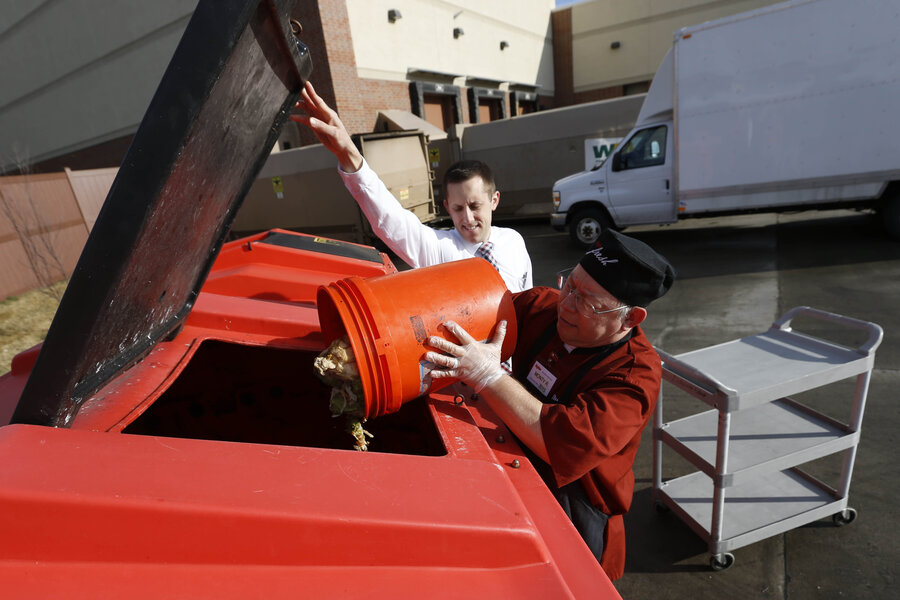How reducing food waste fights climate change
Loading...
Reducing food waste would not only help feed the world’s hungry, it would also mitigate climate change, say scientists at the Potsdam Institute for Climate Impact Research (PIK) in a study published Thursday.
“Agricultural production in general produces emissions, for example, by land conversion or overuse of fertilizer,” Jurgen Kropp, lead author of the study, tells The Christian Science Monitor in an email. And while “emissions from agriculture cannot be completely avoided,” notes Mr. Kropp, the world overestimates demand, producing far more food than the world could ever consume.
The Food and Agricultural Organization of the United Nations (FAO) estimates that one-third of all food produced for human consumption is wasted, including 45 percent of all fruit and vegetables, 35 percent of seafood, 30 percent of cereals and 20 percent of both meat and dairy products. Food waste in 2012 had a carbon footprint of 3.3 gigatonnes, meaning that if this waste was a country, it would rank third behind the US and China in greenhouse gas emissions.
Kropp and his colleagues at PIK say now is the time to address the world’s wasteful agriculture practices, before populated countries like India and China adopt consumption levels on par with the US and Europe.
“We found that food [waste] is mainly a pattern in highly developed countries,” Kropp writes, adding that the direct correlation between development and food waste has been acknowledged for decades. “The more the development level increases, or the higher the income is, the more people request typical Western diets of more calories [and] more animal products.”
The US Environmental Protection Agency says Americans produced 35 million tons of food waste in 2013, 95 percent of which ended up in landfills. (Put differently, Americans throw away enough food every day to fill up the Rose Bowl stadium – about $1,600 worth of food per family, per year.) This is a troubling statistic, says the EPA, because decomposing food, in addition to being the single greatest contributor to landfills, also emits methane, a potent greenhouse gas.
Along with emitting methane, food loss wastes fossil fuel resources. “When you look at the oil that’s used in producing food that’s wasted, it’s 70 times the amount of oil that we lost in the Deepwater Horizon disaster,” Agriculture Secretary Tom Vilsack told NPR’s The Salt.
And addressing the world’s food surplus solves a humanitarian issue, as well as an environmental one. As the world’s population continues to grow, suggest the authors, global food demand is projected to increase by 110 percent by 2050.
“Hence, this inefficiency in the food supply chain needs to be addressed to reduce agricultural related environmental consequences and climate burdens,” write Kropp and his colleagues in their paper. “Addressing this challenge will also lower the future food demand. Therefore, to feed around 9 billion people by 2050, in addition to increasing food production, the key underlying questions that remain be answered are how can we make the food supply chain smarter and more efficient, and how can consumers be convinced to reduce food waste.”
To prevent food waste in the US, the EPA tells shoppers to make a grocery list before going to the store, avoid overbuying, utilize the freezer and compost food scraps whenever possible. And Kropp says the ‘ugly food’ movement gaining steam in the US and Europe has serious waste-reducing potential.
“Imagine that retailers often have guidelines,” says Kropp. “Cucumbers must be straight, otherwise they don’t sell them, or apples need to have a nice shape otherwise they will be thrown away. This is not necessary and in some countries local food cooperatives take this unused food and make it available for poorer people or other consumers.”








